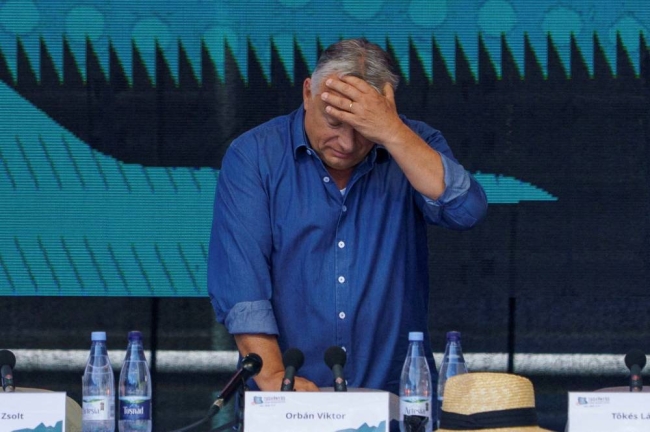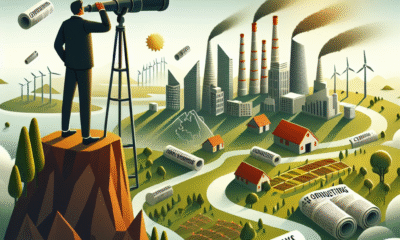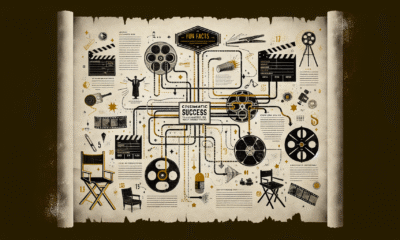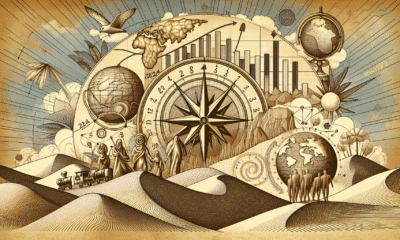News
Orban Calls for Multi-Speed EU Integration Model to Rescue Bloc

Orban’s Bold Vision: Is the EU on the Brink of Collapse?
In a dramatic address at the Balvanyos Summer University in Romania, Hungarian Prime Minister Viktor Orban stirred the pot by claiming that the European Union (EU) is on the verge of "falling apart." In a speech that touched on everything from migration to economic integration, Orban argued that only a “multi-speed integration model” can save the bloc. But is this really the solution, or just another political maneuver? Let’s dive in.
The Multi-Speed EU: What Does It Mean?
So, what’s this "multi-speed" concept that Orban is advocating? Well, it allows certain member states to advance—or lag—on specific policies. This could involve everything from economic integration to migration policies. Here’s a breakdown of how this model could work:
- Security Circle: The first level would focus on security and could even stretch to include potential future members like Turkiye and Ukraine.
- Economic Integration Circle: The next layer would involve economic ties, particularly relating to the Schengen Area, where free movement reigns supreme—something Hungary seems eager to maintain.
- Eurozone Circle: Following that, you have the eurozone, where countries share a common currency.
- Closer Union Circle: Finally, there would be a circle for countries wanting to push for “an ever closer union,” featuring constitutional institutions for deeper integration.
This setup offers a buffet of options: nations can opt in or out based on their goals and comfort level with EU integration.
Orban’s Critique of Brussels
Orban didn’t just throw around ideas without backing them up. His criticism of Brussels was front and center. He emphasized the need for more sovereignty, arguing that nations should reclaim rights that he feels they’ve lost in the EU’s complex bureaucracy. This isn’t just rhetoric; Hungary has long been a vocal critic of numerous EU policies, especially regarding migration.
Migration and National Sovereignty
One of the primary sticking points for Orban has been migration policy. His government has been adamant in seeking exemptions from the EU’s common asylum regulations, asserting that such a move would protect Hungarian sovereignty. "A Europe of concentric circles is the only way to save it," he asserted, pointing out the dwindling public support for open-door policies among various EU countries.
A Firm Stance on the EU Budget
Another hot topic in Orban’s speech was the upcoming long-term EU budget. He mentioned that Hungary might veto the budget plans unless the EU releases billions that were previously withheld. "The adoption of the new seven-year budget requires unanimity," Orban said, making it clear he won’t play ball until Hungary’s financial concerns are addressed.
This kind of tough stance makes headlines, but it also raises questions about what might happen if Hungary finds itself increasingly isolated in the EU landscape.
Is This Vision Sustainable?
Orban’s bold propositions certainly get people talking—can the EU survive a “multi-speed” approach? Some critics argue that this could lead to fragmentation, while supporters believe it offers much-needed flexibility.
The Dangers of Division
The risk, of course, is that a piecemeal approach might create further divisions among member states. If countries can pick and choose what policies to follow, it could lead to a two-tier system where some nations enjoy privileges not extended to others. Just imagine the potential for a “first class” versus “economy class” in EU governance!
Unintended Consequences
The current geopolitical landscape is already shaky, with rising nationalism across Europe. Orban’s ideas could embolden other leaders to take a more nationalistic approach, further straining EU cohesion.
The Bigger Picture
While Orban’s critique of EU bureaucracy resonates in certain circles, we can’t ignore the broader context.
- Public Sentiment: Many European citizens feel disconnected from EU policies—feelings compounded by economic struggles and migration crises. This disconnection could further fuel nationalist sentiments if not addressed carefully.
- Global Landscape: With powers like China and the United States continually reshaping global dynamics, an EU that is divided or stagnant might find it challenging to assert itself on the world stage.
Conclusion: Navigating a New Era
As Hungary navigates its position within the European Union, Orban’s proposed multi-speed approach could either be a game-changer or a recipe for disaster. The ability of the EU to adapt and remain cohesive while addressing members’ individual concerns will greatly determine its future.
For more insights into how international political dynamics affect local governance, check out our recent article on Nationalism in Europe: A Growing Trend and Understanding the Economic Impacts of EU Policies.
Let’s keep this discussion going—what do you think? Is a multi-speed Europe the key to survival, or are we inching toward a dangerous divide? Share your thoughts below!
This article navigates the complexities of Orban’s vision while keeping casual engagement in mind, providing as many insights and critical questions as possible without overwhelming the reader.
-

 News1 day ago
News1 day agoTeenage US Citizen Records Brutal Arrest by Immigration Agents Who Told Him, ‘You Have No Rights’
-
News1 day ago
Maltese Police Officers Participate in Operation in the Black Sea
-

 Business1 day ago
Business1 day agoNavigating the Economic Landscape: Key Insights from Today’s Business Headlines
-

 News24 hours ago
News24 hours ago“Honoring Ukraine: A Tribute” (July 26, 2025) — dynamo.kiev.ua
-

 Entertainment1 day ago
Entertainment1 day agoCinematic Success: Fun Facts About Movies That Shaped the Film Industry
-

 Business23 hours ago
Business23 hours agoThe Top 10 Business Opportunities to Watch in 2025
-

 Business1 day ago
Business1 day agoNavigating the Shifting Sands: Key Global Economic Trends for 2024
-

 Entertainment1 day ago
Entertainment1 day agoBehind the Magic: Unveiling the Secrets of Iconic Film Productions
